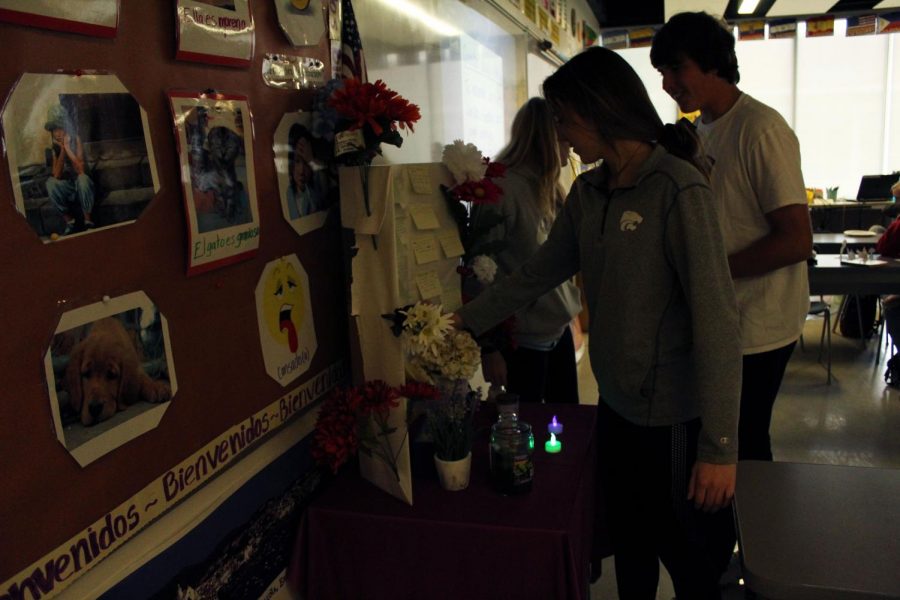Spanish incorporates Day of the Dead
Members of Spanish teacher Olivia Leon’s class place sticky notes on an “ofrenda” to celebrate Día de los Muertos, a traditional Hispanic holiday. The class took time to learn about different cultural practices while also celebrating their own.
November 4, 2019
Spanish teacher Olivia Leon incorporated her Spanish classes – Spanish 2 and 4 – into teaching them how important Day of the Dead is in Mexican cultures.
The Day of the Dead is normally celebrated by Mexicans and Spanish cultural countries. It’s a two-day holiday on Nov. 1 and 2, to celebrate the dead and remember loved ones who have passed.
Leon began the lesson by asking the students to engage in the holiday and bring items like flowers, pictures of their passed loved ones or candles for the altar that she set up in front of the room. In traditional holidays, Spanish cultures would set a huge altar of pictures of passed loved ones, food and/or drinks the dead loved or things that they loved doing and placing them on the altar to remember who they were, any why their life was important.
“I personally think it’s really important to participate in activities for other cultures,” junior Sophia Thurston said. “It helps show you how different the world can be. The day of the dead is also a great way to happily remember people who have passed away.”
During her block-schedule classes, she had her students begin watching “Coco,” a movie to teach what Day of the Dead is and to emphasize how important it is to remember your passed loved ones.
“I really enjoyed seeing how accurate ‘Coco’ is to the actual holiday and I enjoyed our discussion on Friday about el día de los muertos,” junior Haliee Lewis said.
On the first day of Day of the Dead, Nov 1, Leon had her classes finish the movie. Later, she handed out post-it notes to stick on the altar. Students would write a ‘dear to whomever’ letter about their past love one they want to write about and remember. Each student would then bring up their note and stick to the board on the table.
Thurston admits she does some additional Mexican cultures similar to this at home.
“We normally make Hispanic food like tacos, tamales or flautas,” Thurston said. “We never really decorate but I like to light a candle and write notes to the people I’ve lost.”
Unlike American cultures, celebrating the dead isn’t supposed to be sad and mournful, but instead, Spanish cultures throw a big festival, have parades and celebrate the lives of the dead lived.
Skulls are a big cultural aspect of Day of the Dead. Leon had her students decorate a skull to hang up in the classroom after they finished coloring them.
Unlike last year, Leon planned the movie to be first this year to have them understand the movie by watching it first, then incorporating the lessons afterwards. Last year, she did the lesson first, then the movie.
“I think it’s awesome,” Thurston said. “I’ve traveled a lot and learned that being immersed in a culture is very educational. It’s also a great way to help understand other people and how to better interact with people from different cultures.”


